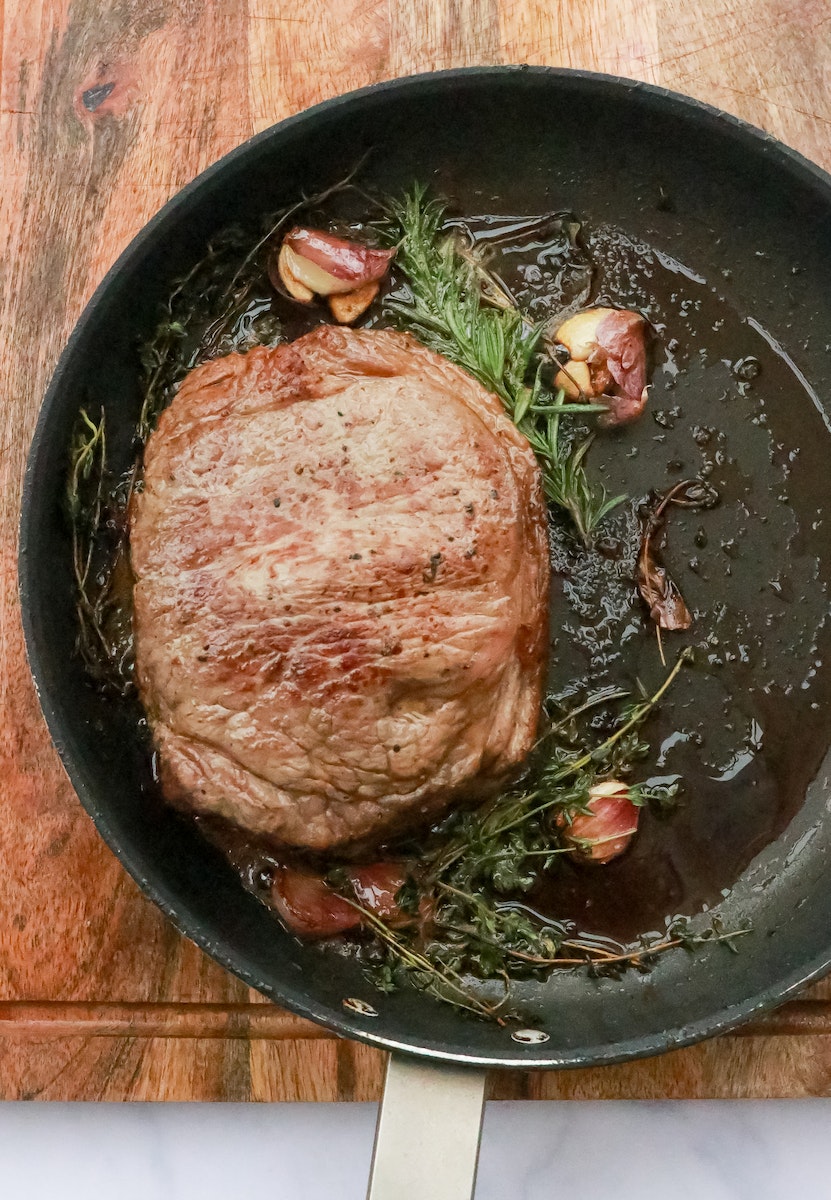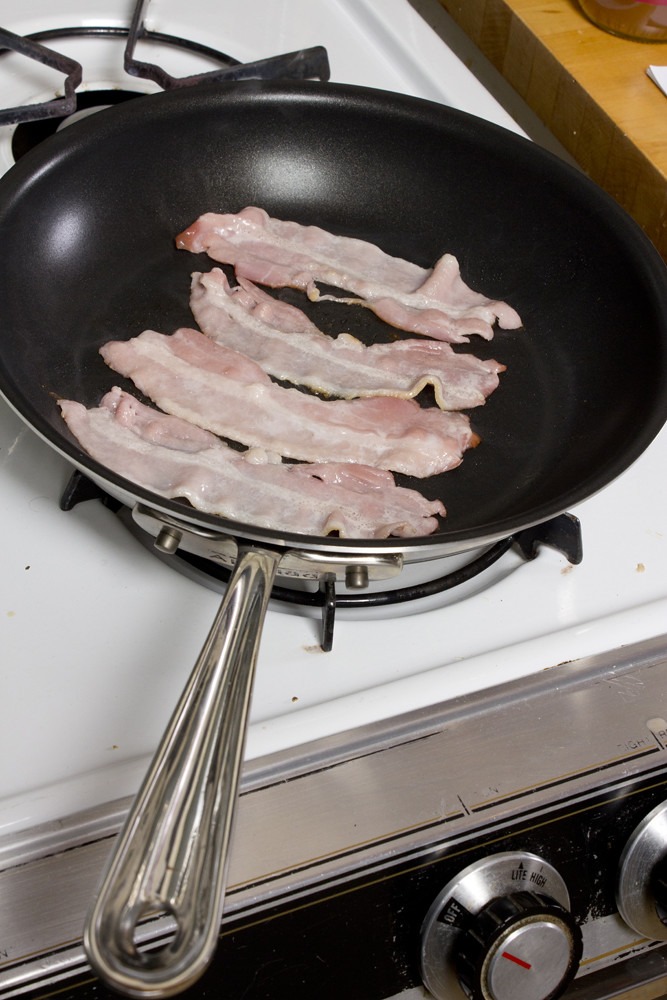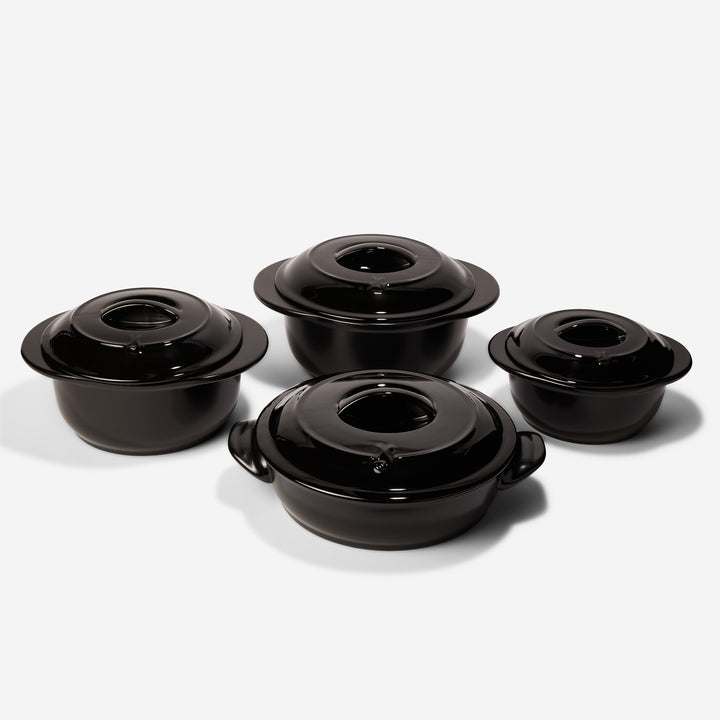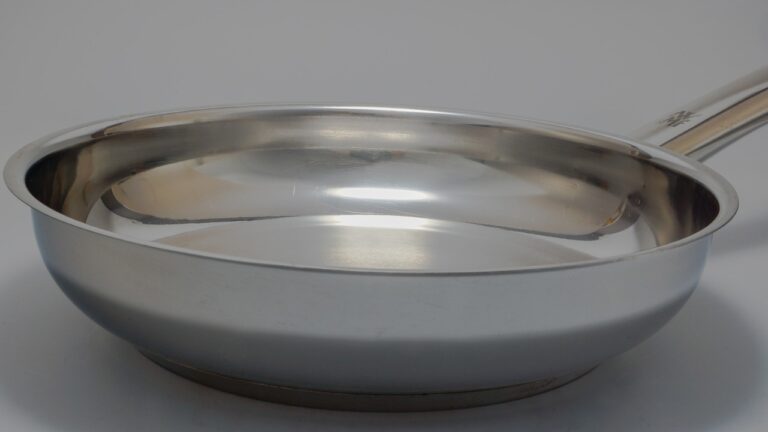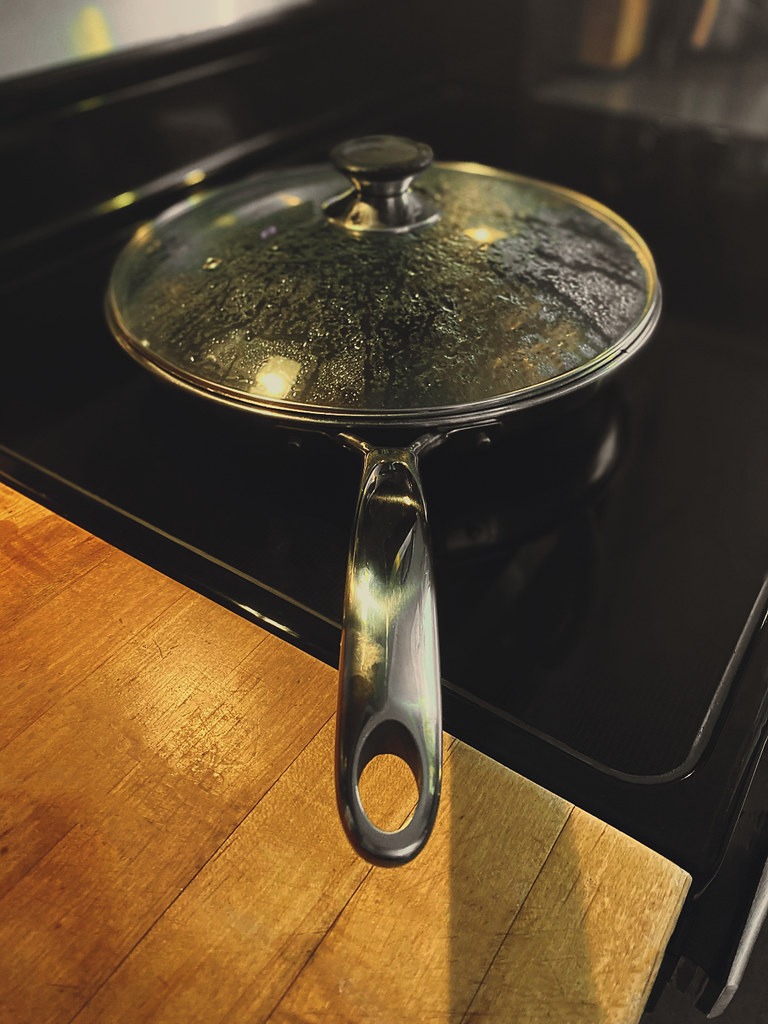If you’re anything like me, your kitchen is your creative playground, and experimenting with different cooking methods is like painting a canvas with flavors. Today, I want to delve into a topic close to my heart – the intriguing world of broiling in cast iron. So, grab your apron, and let’s embark on a flavorful journey together!
Broiling—the art of cooking under intense heat – is a technique that ignites flavors and transforms ingredients into delectable delights. But can we combine this fiery technique with the timeless charm of cast iron cookware? That’s the sizzling question we’re here to answer. So, join me as we explore the ins and outs of broiling in cast iron pans, sharing insights, tips, and even a sprinkle of magic along the way.
So, let’s fire up those ovens and get ready to discover the fantastic fusion of broiling and cast iron cooking! Shall we begin?
Why Cast Iron for Broiling?
Now, the question arises: why choose cast iron as your partner in crime for this broiling escapade?
Let me tell you, something is enchanting about the way cast iron works its magic with broiling. Cast iron cookware, with its rugged appearance and solid build, might seem like a relic from the past, but it’s far from being outdated. It’s a timeless gem that’s perfectly suited for the modern kitchen.
The beauty of cast iron lies in its unparalleled ability to distribute and retain heat. This means that when you place your food in a preheated cast iron skillet under the broiler, you’re essentially creating a sizzling hot cocoon that engulfs your ingredients in intense, even heat. The result? Perfectly seared surfaces, tender interiors, and flavors that are locked in and intensified.
But wait, there’s more! Cast iron’s versatility isn’t confined to the stovetop; it loves the heat of the broiler too. Whether you’re aiming for a beautifully charred steak, a medley of caramelized vegetables, or even a show-stopping broiled dessert, cast iron’s got your back.
Now that we’ve established why cast iron is the ultimate wingman for your broiling adventures, let’s dive into the nitty-gritty of preparing your cast iron skillet for the fiery magic ahead. Ready to roll up those sleeves and get started?
Prepping Your Cast Iron for Broiling
Before you leap into the world of broiling with your trusty cast iron skillet, a little bit of preparation goes a long way. Think of it as the foundation for your culinary masterpiece – strong and solid. So, let’s roll up those sleeves and get our cast iron ready for the sizzle!
Seasoning Power: If your cast iron skillet isn’t already seasoned, now’s the time to give it some love. Seasoning creates a natural non-stick surface that’s a dream to cook on. It also imparts a subtle depth of flavor to your dishes. If your skillet is seasoned, a quick brush of oil will do before broiling.
Heat It Up: Just like a runner stretches before a race, your cast iron skillet needs a good preheating session before it meets the broiler’s heat. Pop it into the oven and crank up the broiler to high. Let it heat up for about 10-15 minutes. This ensures that your skillet is evenly heated and ready to work its magic.
Positioning is Key: While your skillet is heating up, make sure to adjust the oven rack. You’ll want your skillet to be about 3-4 inches away from the broiler element for optimal broiling results. This ensures that your food cooks evenly without getting overly charred.
Oil Up: Depending on your recipe and the food you’re broiling, a light coating of oil can be your secret weapon. Not only does it prevent sticking, but it also adds a touch of flavor and helps achieve that beautiful sear.
With your cast iron skillet seasoned, preheated, and ready for action, you’re now equipped to take on the broiler with confidence. The next step? Getting your ingredients ready and diving into the heart of broiling techniques. Let’s explore how to create those gorgeous sear marks and intensified flavors together!
Sizzle and Seer: Broiling Techniques
Ah, the heart of broiling – the sizzle and sear that give your dishes that irresistible appeal. Whether it’s a juicy steak, vibrant vegetables, or even delicate fish, mastering the art of broiling in cast iron is all about understanding the techniques that make those flavors pop.
The High and Fast Approach: Broiling is like a quick and passionate fling – it’s all about high heat and fast cooking. Once your cast iron skillet is preheated and ready to go, place your food on it and slide it under the broiler. This intense burst of heat sears the exterior, sealing in the juices and creating those coveted grill marks.
The Flipping Game: Depending on what you’re broiling, flipping your food halfway through the cooking time can be a game-changer. It ensures even cooking and a symphony of flavors on both sides. Use tongs to flip your ingredients gently, allowing the other side to bask in the broiler’s glory.
Watching Like a Hawk: Broiling is a bit like watching a thrilling movie – you can’t take your eyes off it. With the intense heat of the broiler, things can go from perfectly caramelized to charred in the blink of an eye. So, stay close and keep a watchful eye on your culinary masterpiece.
Basting for Flavor: If you’re feeling adventurous, consider basting your food with a flavorful marinade or sauce during the broiling process. This not only adds a depth of flavor but also creates a glaze that enhances the visual appeal of your dish.
The Cast Iron Afterglow: Remember, even after you’ve turned off the broiler, your cast iron skillet continues to radiate heat. This means that your food will keep cooking for a short while even after it’s out of the oven. So, factor in this residual heat when gauging your cooking time.
With these techniques in your culinary toolkit, you’re now ready to infuse your broiled creations with the magic of cast iron. But wait, there’s more to the story – the marriage of oils and seasonings that takes your broiled dishes to a whole new level. Shall we uncover the secrets of flavor infusion?
Flavor Infusion: Oils and Seasonings
Ah, the symphony of flavors – that’s what separates a good meal from an unforgettable one. When it comes to broiling in cast iron, oils and seasonings are your brushes, allowing you to paint vibrant and mouthwatering masterpieces. Let’s dive into the world of flavor infusion and explore how to make your broiled dishes sing.
The Art of Oiling: Before your ingredients hit the hot cast iron skillet, a light coating of oil can be the key to achieving that irresistible sear. Different oils bring their unique flavors to the table. From the delicate nuttiness of olive oil to the aromatic richness of sesame oil, your choice of oil can elevate your dish to new heights.
Marinades and Rubs: Imagine a steak marinated in a blend of herbs, garlic, and a touch of citrus zest. Or a fillet of fish coated in a fragrant spice rub. Marinades and rubs aren’t just about flavor; they’re about transforming your ingredients. Let them sit for a while to let those flavors penetrate, and then slide them onto your preheated cast iron skillet for a taste explosion.
Herbs, Spices, and All Things Nice: Fresh herbs and ground spices are like musical notes in your culinary composition. They add depth, complexity, and a touch of intrigue to your dishes. Experiment with a sprinkle of thyme, a pinch of cumin, or a dash of smoked paprika to create flavor profiles that dance on your taste buds.
Acidic Notes: While acidity can be a magical touch in cooking, it’s important to be mindful when broiling in cast iron. Highly acidic ingredients like citrus juices or vinegar can react with the iron and affect both the flavor and the seasoning of your skillet. If you’re using acidic ingredients, keep the exposure time limited.
The Seasoned Affair: If your cast iron skillet is well-seasoned, it’s like having a flavor superhero at your disposal. The layers of polymerized oil create a natural non-stick surface that’s perfect for broiling. This means you might not need as much oil, and the flavors of your ingredients can shine through without any sticking.
As you experiment with different oils, seasonings, and flavor combinations, remember that broiling in cast iron isn’t just about cooking – it’s about creating an experience. Your ingredients are your raw materials, and your skillet is your canvas. So, paint with confidence, infuse with creativity, and let the flavors speak for themselves. Ready to explore the array of foods you can broil to perfection?
Maintaining Your Cast Iron’s Shine
As we dive deeper into the world of broiling in cast iron, let’s not forget about the care and maintenance that keeps your skillet performing at its best. Cast iron cookware is like a trusted friend – it rewards you with fantastic meals, and in return, it deserves a little TLC. Here’s how you can ensure your cast iron stays in prime condition:
Cooling Down: After your broiling adventure, allow your cast iron skillet to cool down slightly before cleaning. This not only prevents thermal shock but also makes the cleaning process easier.
Gentle Scrubbing: Using a soft brush or cloth, gently scrub off any food residue. You don’t need harsh abrasives – a little elbow grease and patience go a long way.
Avoid Soap: Yes, you heard it right. Soap can strip away the precious seasoning that makes your cast iron skillet shine. Instead, rely on the power of hot water and gentle scrubbing.
Dry Thoroughly: Moisture and cast iron are not the best of friends. To prevent rust, ensure your skillet is completely dry before storing it. You can even pop it back into the oven for a few minutes to ensure it’s bone dry.
Seasoning Touch-Up: Over time, your cast iron skillet might benefit from a seasoning touch-up. This involves applying a thin layer of oil and baking it to create that coveted non-stick surface.
Storage Wisdom: When storing your cast iron skillet, place a paper towel or a cloth between it and other cookware to prevent scratches. If you stack your skillets, place a paper towel between them to avoid moisture buildup.
Remember, your cast iron skillet is a culinary ally, and with proper care, it can last for generations, continuing to deliver perfectly broiled delights for years to come. And speaking of care, let’s address an important aspect – how to handle hot cast iron safely. Shall we?
Safety First: Handling Hot Cast Iron
Now that we’ve explored the art of broiling and the nuances of cast iron care, let’s talk about safety. Cooking with cast iron is a rewarding experience, but it does involve dealing with high heat and, of course, the ever-hot skillet handle. Here are some tips to keep you and your kitchen safe while broiling in cast iron:
Handle Covers: Cast iron skillet handles can become scorching hot under the broiler. Always use oven mitts, handle covers, or even a thick kitchen towel to protect your hands when handling the skillet.
Avoid Plastic: Be cautious when using plastic utensils near a hot cast iron skillet. High heat can cause plastic to melt or warp, which isn’t ideal for your kitchen or your meal.
Mind the Grease: As you’re working with high heat, there’s a chance that oils and fats might splatter. Keep a safe distance and avoid leaning too closely over the skillet to prevent accidental burns.
Children and Pets: If you have little ones or furry friends, keep them at a safe distance from the cooking area. Hot skillets and broilers are not playgrounds!
Watch Your Clothing: Loose sleeves, apron strings, and clothing can easily come into contact with the hot skillet or the broiler. Ensure your clothing is secure and away from potential hazards.
Give It a Rest: After broiling, allow the skillet to cool down before cleaning or storing it. Trying to clean or move a hot skillet can lead to accidents.
Safety is paramount in the kitchen, and by being mindful of these tips, you can enjoy the delights of broiling in cast iron while minimizing the risks. With safety in mind, let’s address some common questions that might be lingering in your mind. Ready for some FAQs?
FAQs About Broiling in Cast Iron
- Can I broil acidic foods in cast iron? While cast iron is sturdy, prolonged exposure to acidic foods can affect both flavor and the seasoning. It’s best to avoid extensive broiling of highly acidic ingredients.
- Do I need to oil my cast iron before broiling? It’s a good idea to lightly oil the surface for enhanced flavor and to prevent sticking. Well-seasoned skillets might require less oil.
- Is broiling in cast iron safe for my oven? Yes, as long as your skillet is oven-safe. Double-check for any non-heat-resistant components, especially handles.
- Can I broil frozen food directly in cast iron? While possible, it’s better to thaw frozen food before broiling. This ensures more even cooking and prevents uneven results.
- How do I clean my cast iron after broiling? Allow the skillet to cool slightly, then gently scrub off residue with a soft brush or cloth. Avoid using harsh detergents to preserve seasoning.
- Can I broil desserts in cast iron? Absolutely! Cast iron can work wonders with broiled desserts like fruit crumbles or baked Alaska, adding a delightful touch of caramelization.
- Why is my broiled dish unevenly cooked? Uneven cooking might occur due to the distance between the broiler and your skillet. Adjust the oven rack position for better balance.
- Can I use butter instead of oil for broiling? Yes, butter adds flavor. However, keep in mind that butter has a lower smoke point, so be careful not to burn it.
- Do I need to flip the food while broiling in cast iron? Flipping can help ensure even cooking, particularly for thicker cuts of meat. Use tongs to flip the food halfway through broiling.
- Can I broil delicate fish in cast iron? Absolutely! Just be vigilant, as fish cooks quickly under the broiler. A well-seasoned cast iron skillet can help prevent sticking.
Now that we’ve tackled some of the most pressing questions about broiling in cast iron, let’s bring our journey to a close and reflect on the delectable possibilities that this culinary technique opens up. Ready for the final thoughts?
Conclusion
And there you have it – the art of broiling in cast iron, demystified and laid out in all its sizzling glory. As someone who has embraced the joy of culinary exploration, I can confidently say that broiling in cast iron is a realm of possibilities waiting to be uncovered. It’s not just about cooking; it’s about creating an experience, a symphony of flavors that dances on your taste buds.
From perfectly seared steaks to caramelized veggies and broiled desserts that make your heart skip a beat, your cast iron skillet becomes a trusty companion on this flavor-filled journey. With preheating rituals, handling precautions, flavor infusion techniques, and a bit of seasoning love, your cast iron skillet transforms into a vessel of culinary wonders.
As you experiment with broiling, remember that cooking is an art, and your kitchen is your canvas. Don’t be afraid to explore, to improvise, and to let your taste buds be your guide. Your cast iron skillet, with its rugged charm, becomes a tool of creative expression, helping you achieve the perfect sear, the ultimate caramelization, and flavors that sing.
So, let’s raise our oven mitts to the exciting world of broiling in cast iron – a world where heat meets history, where flavors are intensified, and where every meal is a celebration of culinary innovation. As you embark on your own broiling adventures, may your skillet sizzle, your flavors tantalize, and your kitchen become a realm of culinary magic. Happy broiling!
